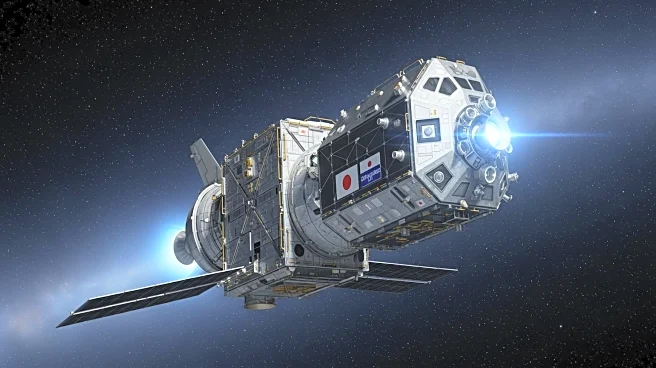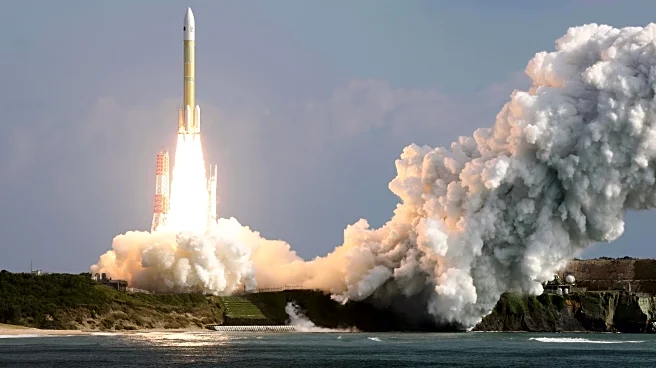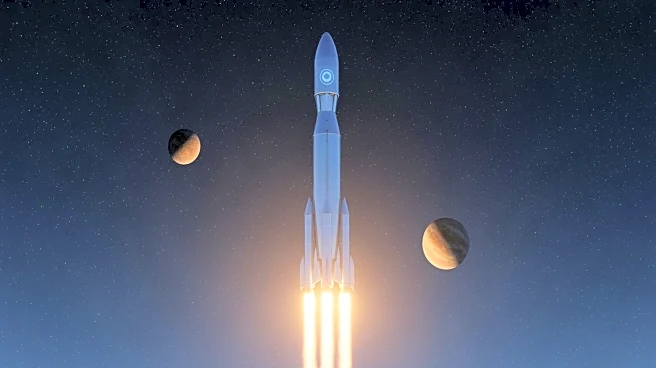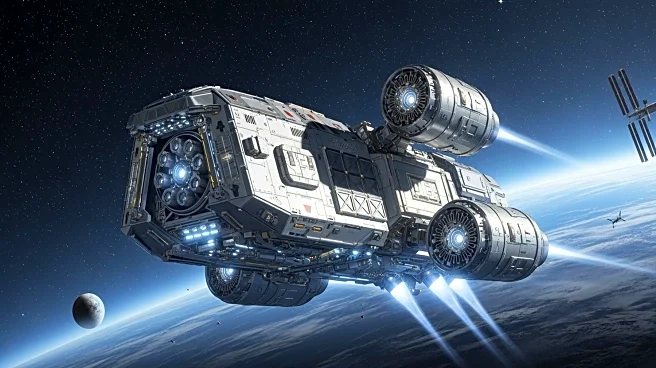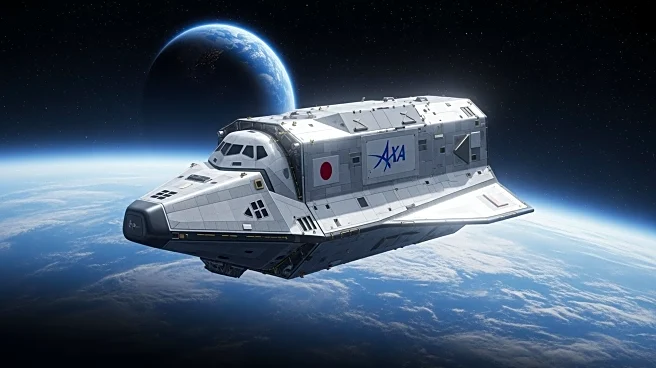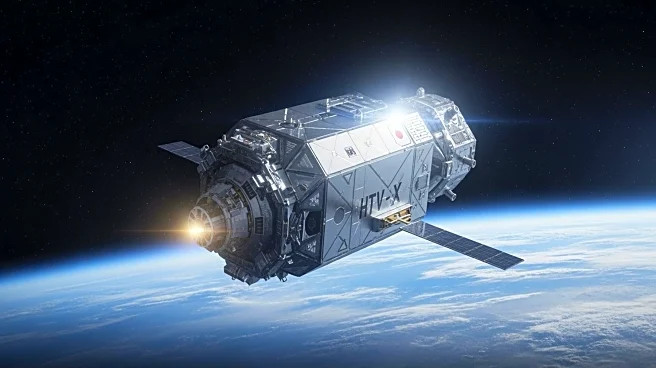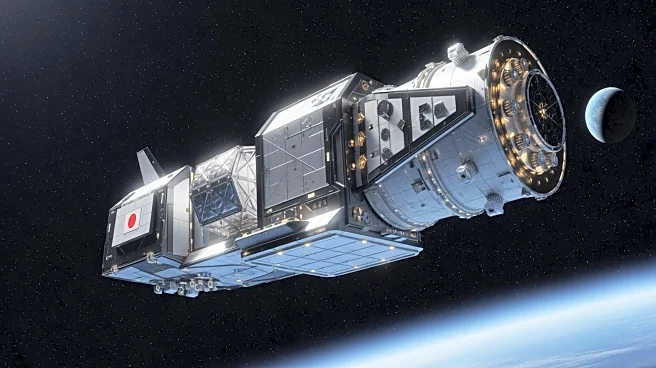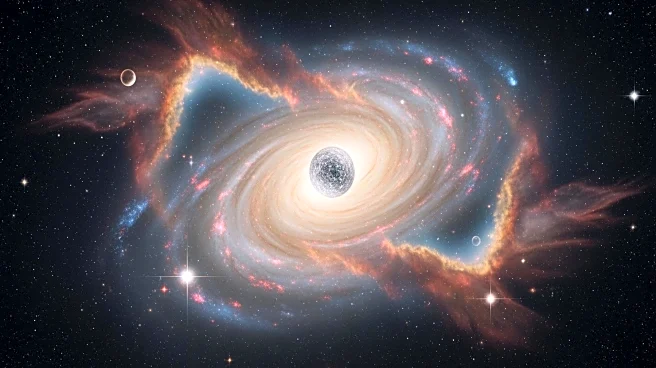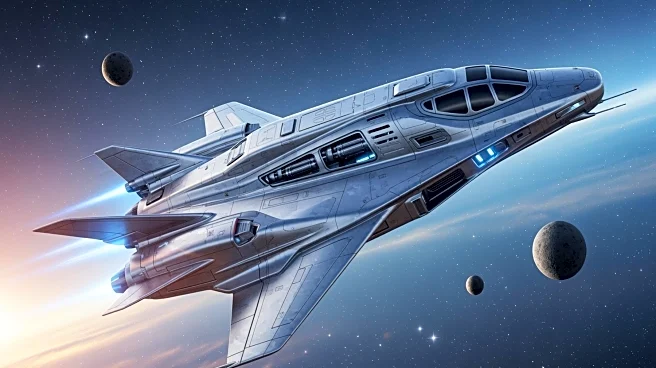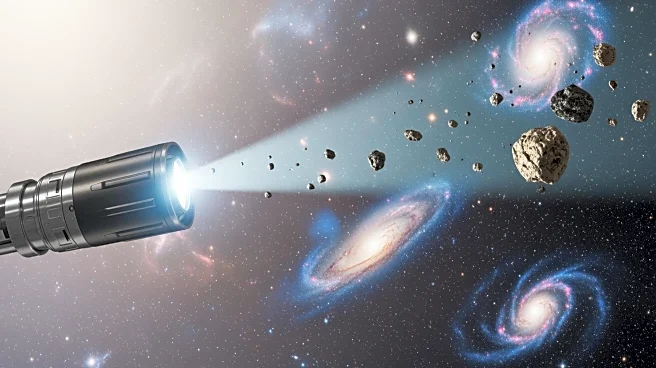What's Happening?
Japan's space agency, the Japan Aerospace Exploration Agency (JAXA), successfully launched its most powerful H3 rocket, carrying the newly developed HTV-X1 unmanned cargo spacecraft. The launch took place
at the Tanegashima Space Center in southern Japan. The HTV-X1 spacecraft entered its targeted orbit 14 minutes after liftoff and is expected to arrive at the International Space Station (ISS) within a few days. Japanese astronaut Kimiya Yui, currently stationed at the ISS, will use a robotic arm to capture the spacecraft. The HTV-X1 is an advanced version of JAXA's previous H-II Transfer Vehicle, capable of carrying larger payloads and providing power during flight, which is crucial for transporting lab samples requiring low-temperature storage. The spacecraft is designed to remain connected to the ISS for up to six months, delivering supplies and retrieving waste, before conducting technical missions during a three-month orbital flight.
Why It's Important?
This successful launch marks a significant advancement in Japan's space capabilities, demonstrating its ability to autonomously deliver supplies to space. The H3 rocket, which replaces the H-2A model, is designed to be more cost-competitive in the global space market, enhancing Japan's commercial space transport capabilities. This development is crucial for Japan's national security and its space program, as it aims to establish a stable and commercially viable space transport system. The successful debut of the H3 rocket's most powerful version, equipped with four rocket boosters and a larger payload compartment, showcases Japan's technological prowess and reliability in space missions, potentially attracting more international customers.
What's Next?
The HTV-X1 spacecraft is expected to arrive at the ISS shortly, where it will deliver essential supplies and retrieve waste. Following its mission at the ISS, the spacecraft will conduct technical missions during a three-month orbital flight. JAXA and Mitsubishi Heavy Industries, responsible for developing the H3 rocket, plan to expand their launch facilities to accommodate a broader range of customer needs. This expansion could lead to increased international collaborations and commercial opportunities in the space sector, further solidifying Japan's position in the global space market.
Beyond the Headlines
The successful launch of the H3 rocket and HTV-X1 spacecraft highlights Japan's commitment to advancing its space technology and capabilities. This development could lead to increased investment in space exploration and technology, fostering innovation and collaboration within the industry. Additionally, Japan's focus on creating a cost-competitive space transport system may influence other countries to enhance their space programs, potentially leading to more international partnerships and advancements in space exploration.
